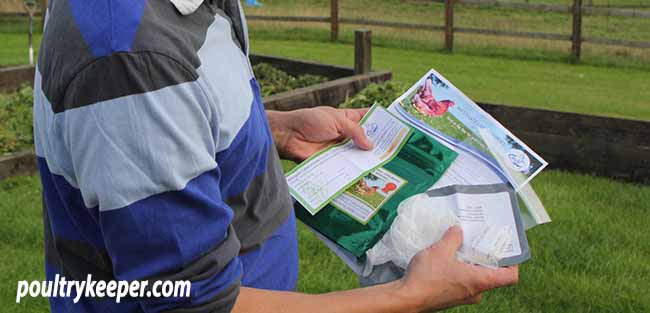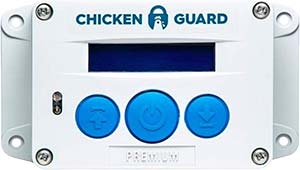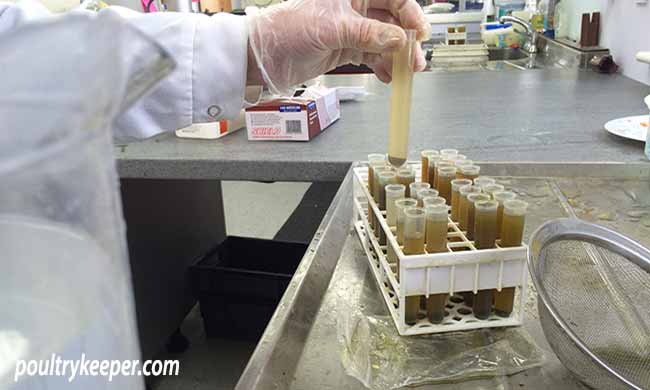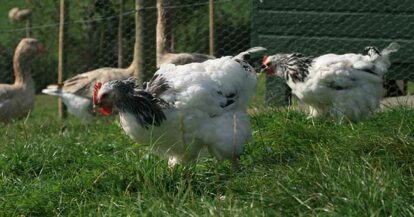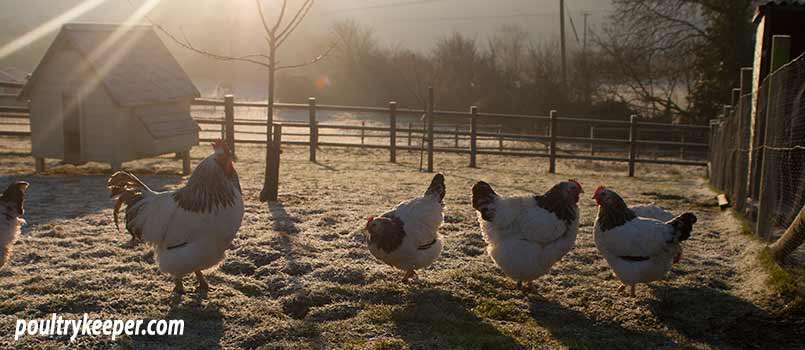
Keeping chickens is a lot of fun, but once we reach the autumn and winter approaches, chickens start to moult, many will stop laying, and poultry keepers need to think ahead a little.
While it seems a long way off yet, winter can be challenging for our birds and us. With the cold, dark mornings and dark evenings, many of us may be opening the chicken house before work in the dark and closing it when we get home in the dark. Here are some tips for keeping chickens in autumn, where we will also think about getting ready for the cold days ahead.
There is no better time than the autumn to start thinking ahead and carrying out any repairs that need doing to the hen-house and run to make it waterproof and predator-proof for the winter.
Keeping chickens in autumn
Chickens not laying during the autumn?
The spring and summer months are my favourites. I can spend plenty of time outside with my birds, and my daily chores are simple enough before I go to work. During the afternoon, we collect our eggs, and there’s never usually a shortage. I’m in the habit of locking my chickens up at dusk which is late enough in the day that there’s always someone around to do it.
During the autumn, I open the gate to our vegetable garden to allow the chickens to forage while I dig our small plot over ready for winter. It’s a pleasure seeing them scratch around and is, after all, what chickens love best. Keeping chickens in autumn isn’t particularly difficult, but winter is lurking, just around the corner.
Chickens autumn moult
Chickens (depending on their age) will start moulting in the late summer or autumn. The older a chicken gets, the sooner it will begin to moult and the longer it will take. The best laying hens will get through their moult faster. It is a perfectly natural process where hens lose their feathers gradually and regrow new ones.
Most chickens will stop laying during the autumn moult. Eggs and feather production use mostly protein, so to regrow new feathers, they need all the protein they can get, so it is perfectly normal for egg-laying to stop.
Related Articles:
You might also find these articles useful:
- More information about Chickens Moulting: Symptoms, Diet and Care.
- Why have my chickens stopped laying?
Autumn jobs: planning for winter
Check your chicken house and run
The chicken run should be checked for wear and tear; it is essential to check for gaps that a fox could squeeze through. I have seen most fox damage where the wire joins a chicken house. Even a small hole or weak section of the fence can be torn back easily by a fox.
Make sure wire is buried, or use an electric fence to stop a fox digging or climbing.
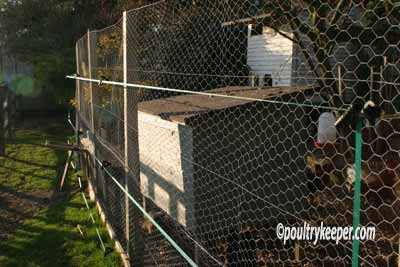
If you use an electric fence, make sure there are no short circuits to the ground (branches, grass or anything else touching) because, during the winter, you are more likely to have hungry foxes about that may be more willing to attempt to get into your chicken run.
An electric fence tester is a good investment. Take regular measurements, recording the ‘normal’ voltage your fence produces and investigate causes of dips.
When inspecting the chicken house, check for signs of water leaks. Birds cannot stand draughts or get wet.
Inspect the roof to make sure that it is waterproof. Avoid using felt if you can as this provides the ideal environment for red mite during the summer months. These ectoparasites multiply very quickly, and it is almost impossible to get rid of them once they go under the roof felt.
Onduline roofing material is ideal as a replacement for felt and is available in most DIY stores. It is lightweight and easy to use.
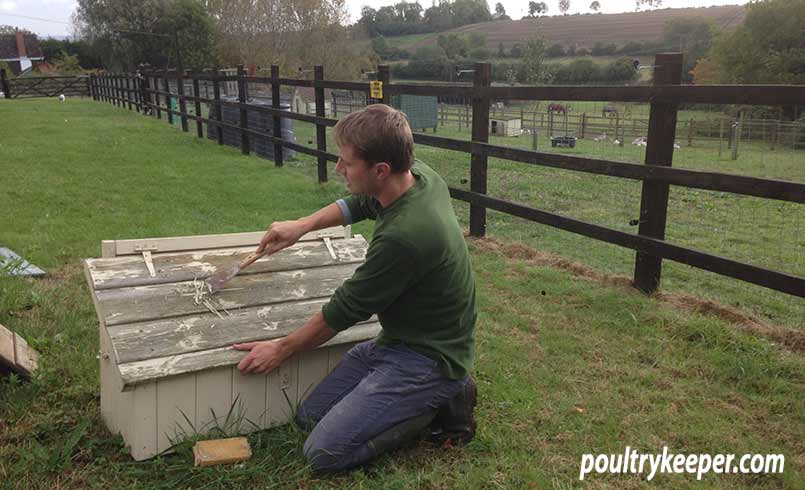
If you plan on treating or painting your chicken house, then check that the product you are using is safe for birds. If you are unsure, call the helpline number on the back of the tin and ask if it’s safe for animals and under no circumstances allow birds back into the house until it is dry.
Shorter days, longer nights
Locking up your chickens at dusk
As the days get shorter, you will need to ensure you can lock your chickens up at dusk and not let them out until it’s light in the morning. Even if your run is secure, it’s often still a good idea to make sure the chicken coop’s door is closed, just in case. I say this because I’ve known a hungry fox to go to remarkable lengths to get into a chicken run.
If you work away from home or are likely to be out when it gets dark, an automatic pop hole opener/closer is well worth the investment for peace of mind alone. It will open and close the pop hole when it gets light/dark, and you won’t have the worry of Mr Fox beating you home for dinner!
Automatic
Door Opener
& Closer
The most likely time for predators like foxes to visit is at night, so your chickens must be locked up safely from dusk until dawn.
If you are worried about being at home in time to lock up your chickens, then an automatic chicken house door opener/closer might be the answer.
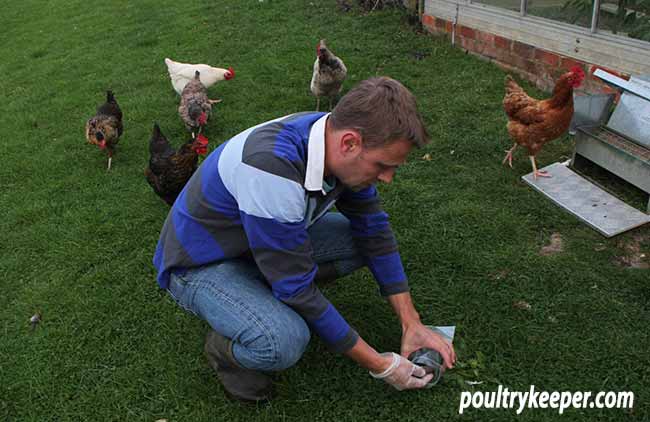
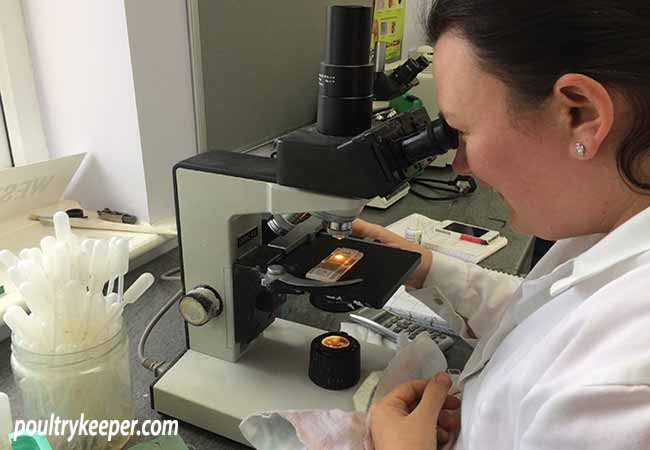
Grazing rotation and worming
If your chickens are kept continuously on the same patch of ground, once the grass stops growing in October, you will soon find it will quickly turn to mud unless you have a large area for them. It is worth rotating their grazing if you can.
Some runs and houses are movable, but you might consider dividing it to allow one half to recover before the grass stops growing if you have a fixed run.
I keep my chickens on a strip of land, and I have divided this into several sections. As one area gets worn, I move their house along or open up a picket gate to allow them onto fresh ground. I mix my flocks after the breeding season – so as many runs get a rest and get to recover before the grass stops growing.
Rotating your poultry’s grazing will also avoid a build-up of endo-parasites (worms) on the ground (and, therefore, a build-up in your birds).
It is crucial to check your chickens for worms in the spring and autumn. If your stocking density is high, with your birds on the same piece of ground, you may end up needing to worm your chickens before winter. A worm count will soon tell you if it’s necessary.
Getting A
Worm Count
Using a worm egg count kit is relatively straightforward. There are gloves, a collection bag for samples and a pre-paid envelope. The worm count takes place in a lab under a microscope, and the result is returned by email advising you of the number of eggs and whether you need to worm your chickens.


Why should you check for worms in the autumn?
Worms challenge a chicken’s immunity, and winter is hard enough for them without the additional challenge of a high parasite load.
Worm eggs do not develop below 10⁰C, so autumn is an excellent time to check your chickens for worms and de-worm them if needed. You shouldn’t see any worm problems over the cold winter months if you deal with issues now.
Mud is also an ideal breeding ground for poultry worms, so we should avoid poached, muddy areas as the weather turns wetter and the grass stops growing.
Managing mud
With hardwood chips
If you have a fixed run and don’t have the option of rotating the pasture, then with heavy rainfall, the chicken run will quickly turn to mud. It is especially true during the winter because the grass isn’t growing.
You can use hardwood chips to cover muddy areas (for example, outside doors, gates and pop-holes where there is a lot of traffic), or as a substrate on the floor of smaller runs.
Scattering mixed corn into the wood chips also relieve boredom because chickens will spend hours scratching through it and turning it for you.
It drains well and will last a long time and wash through well if they get mucky in smaller runs.
When hardwood chips finally need replacing, it is best to dig them out and use them as a mulch around trees and shrubs in the garden where they will rot down. The added chicken manure will also help your plants when the nutrients go into the ground.
You can have hardwood chips delivered in large bags.
Don’t use bark chippings, these are cheaper but tend to hold water, and then start to rot. When they do, they can harbour mould spores which can cause Aspergillosis in chickens.
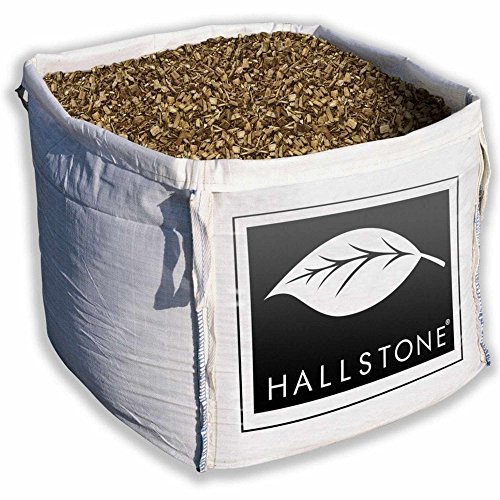
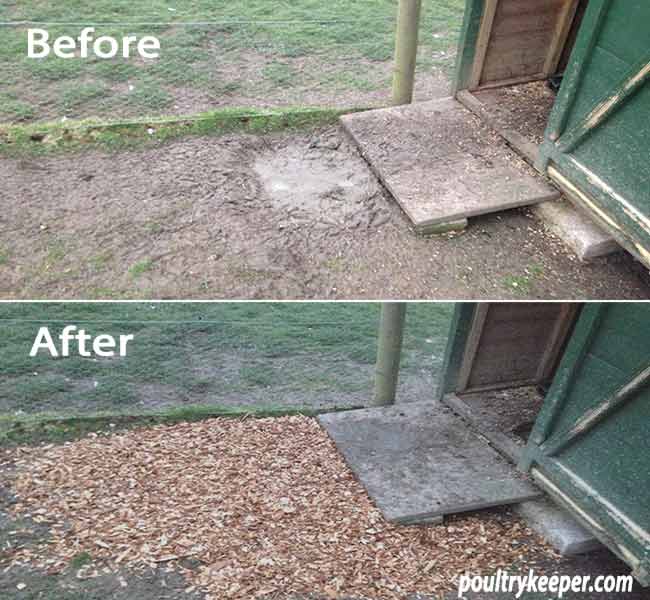
We aren’t all lucky enough to have more than one run to move birds around. One solution is to use portable chicken fencing like this one from Omlet that I reviewed. It can be useful to allow birds to ‘strip graze’ or keep them off particularly muddy areas.
Remember, ducks and geese will need constant access to clean water for washing. A lack of water and excess mud can cause a condition known as ‘wet feather‘, which is difficult to resolve.
Stocking density
Now is the time to check your numbers and decide what you plan to do next spring. Are there any birds that need selling? Are there any surplus cockerels, drakes or ganders that need culling?
Remember the old-timers saying “a bad bird costs as much to keep as a good ‘un…”
As brutal as this seems, if you keep too many birds on your ground over winter, then all of your birds will suffer, so it is better to make some tough decisions now. Ducks make a mess with their dabbling. A wet piece of grass can turn into a muddy mess in no time at all.
We keep our ducks and some chickens in a covered run with a gravel base during the wettest part of the year, which stops them from ruining the grass in their usual run. When it is raining, most chickens take shelter anyway, so there are no benefits to them being out on the grass.
Of course, ducks love the rain but are usually quite happy around their water tub in the gravel-covered run.
Feeders and Water Containers
Feeders and water containers should, of course, be clean but now is an excellent time to ensure they are in good working order and order a spare to keep indoors.
Why keep a spare indoors? Well, when you go out one morning in a hurry to find there’s been a hard frost and your birds are looking for water; hopefully, you will thank me 😉
There are several different drinkers available. My favourites are these 6 litre and 12 litre red and white drinkers because they have interchangeable bases that saves me mixing them up.

During the colder winter months, I only half fill the drinkers. The chickens drink less in the cold, and I empty the containers every night and take them inside, so they don’t freeze.
An alternative to this if you want to keep water containers out is to use an electronic heat pad that keeps the water container heated from underneath to stop it freezing. These work very well, although I’m not particularly eager to use them because of the environment. They can also be expensive if you have a few water containers to consider.
Remember, when filling water containers, don’t use hot water. Although logically, you would think that hot water takes longer to freeze, it is, in fact, the other way around! It is known as the Mpemba effect named after Tanzanian Erasto Mpemba. Wikipedia has more information on this if you don’t believe me!
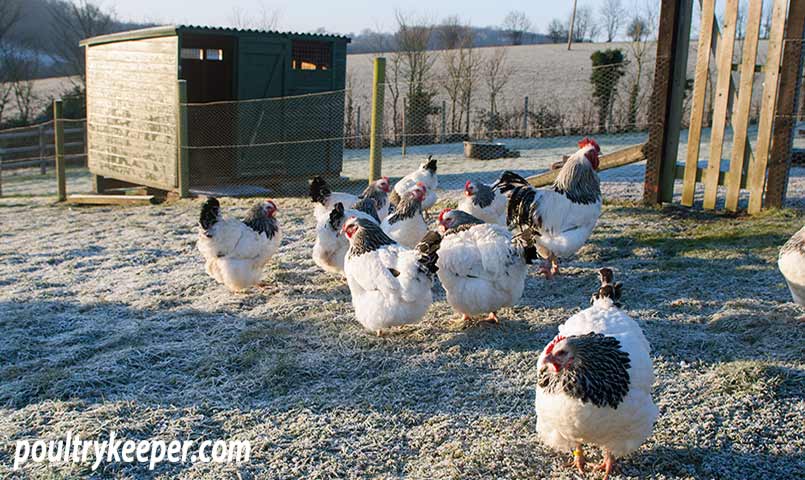
It can be a busy time, keeping chickens in autumn, but it will be far more manageable over the winter if you are well prepared now.
If you are concerned about keeping chickens over the winter, I suggest you also read my article: Keeping Chickens in Cold Weather.

